Cemitas: Pueblan Specialty, Chicago Favorite
When many people think of Mexican sandwiches, tortas are probably what they think of. (That is, if they’re not thinking of tacos, burritos, etc., as sandwiches, an ongoing discussion I won’t revisit here.) Tortas do seem to be the most common example found outside Mexico, or inside Mexico for that matter. Unless you’re lucky enough to live in Puebla; or somewhere with a higher-than-usual proportion of Pueblan immigrants; or unless you live in Chicago, where Tony Anteliz, proprietor of Chicago’s Cemitas Puebla (formerly Taqueria Puebla) has been the face of Cemitas in Chicago since his original Humboldt Park location at North & Monticello started getting noticed by foodies about a dozen years ago.
Since then, he’s moved several doors down the block to a bigger shop, changed the name to feature their specialty sandwich, and opened a second location in the hip Fulton Market District offshoot of the West Loop’s dining corridor.
Though we here at the Tribunal are mainly interested in sandwiches, when I saw that Cemitas were coming up on the List, I reached out to Tony to see if he’d take a few minutes to tell me about his history with these excellent Pueblan sandwiches and maybe give me a few expert tips about them. Tony was gracious enough to host me at his restaurant’s West Loop location recently for an informative hour-long discussion and a delicious lunch, both centering around the Cemitas that gave his restaurant its (new) name.
Cemitas Puebla: A Brief History
Tony’s parents both came from the Mexican state of Puebla, his father from the city of the same name, his mother from an outlying small town. When they came to America, they bought into the American dream in a major way, working one job after another and eventually opening a travel agency catering especially to Mexicans visiting their relatives back home. Travel became a regular part of Tony’s life–he spent summers in Puebla with his grandmother through his childhood, whether he liked it or not. “You know, you’re a teenager, you’ve made plans with your friends… Nope, you’re going to Puebla on Tuesday. See you in August.”
Teenage resentment aside, Tony grew to know and appreciate the city of Puebla during those summers, its culture, its history, its cuisine. Puebla, situated on the road from the major Atlantic seaport of Veracruz to the capital Mexico City, saw waves of invasion (Cinco de Mayo celebrates a Mexican victory at Puebla over French forces in 1862) and immigration during the 19th and early 20th centuries, mainly Spanish, French, German, Lebanese, and Italian. The city and region has become a melting pot of cultural influences, and Tony learned to love the markets, the smells of bread baking in the French quarter, and the cuisine, especially 2 items. One of them is the taco arabe, a Lebanese-influenced spit-roasted meat (though it may have been originally invented by WWI-era Iraqi immigrants), similar to shawarma, served on a Lebanese-style pita called pan arabe.
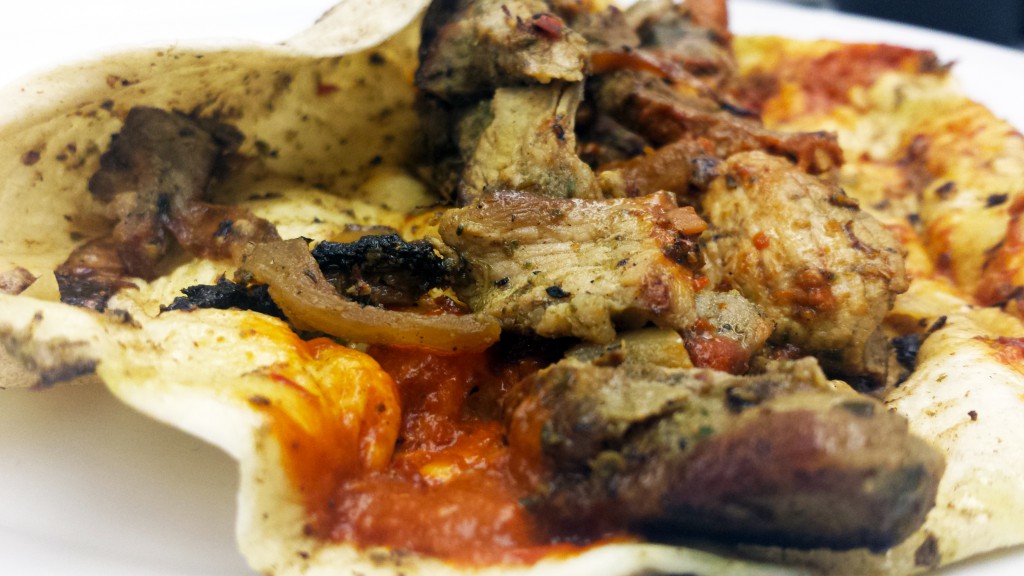
The inside of a taco arabe from Cemitas Puebla. Tony has been serving these on specially-made thick flour tortillas, since the Lebanese pitas available are way too large for tacos. More on this later.
The other was of course the Cemita. After spending the summer months immersed in Pueblan culture, Tony would return to Chicago, to school, to his friends and the bleak colder months of the midwest. Daydreaming of the foods of summer, he’d ask his dad if they could go out for tacos arabes or cemitas, only to be told there weren’t any places serving them. Why not? he’d ask. “Because there’s not too many Poblanos around here,” his father explained. The Mexican people in Chicago were mainly from Michoacán, Guanajuato, Jalisco. Pueblans and their cuisine were largely absent.
Tony went to work at his parents’ travel agency, continuing there after graduating from Loyola with a degree in History in 1999. Eventually though, websites like Expedia, Travelocity, Priceline, and even the airlines’ own websites were growing their footprints in the travel marketplace, squeezing out smaller players. Tony’s parents, seeing the writing on the wall, sold their business, and Tony found himself in need of a job. Tony’s dad, ever the entrepreneur, pointed out an empty hot dog stand and a Puebla-shaped hole in the restaurant game.
Tony gave his aunt & uncle’s recipe for cemita rolls to a local baker, who was able to adapt it to their commercial needs and produce the rolls for him. Most everything else he was able to source or make locally. Two main things were different–the chipotle peppers required for the signature hot/smoky sauce used in cemitas, and the Oaxacan quesillo-style cheese he wanted. His father started using the airline miles accumulated during the travel agency days to go to Puebla and return with suitcases stuffed full of these irreplaceable ingredients. When the airline miles ran out, he began financing his trips by making small deliveries from the Pueblans in Chicago he knew to their families back home.
The early days were rough. People would come in for the standard tacos, but were uninterested in the specialties that differentiated Taqueria Puebla from other places. Tony’s staff dwindled. He learned every job in the restaurant, from the kitchen to the register. He tweaked his recipes until he had them as close to perfect as he could make them. Cemitas became a passion to him, and he began evangelizing them, often presenting cut-up cemitas gratis to customers whom he hoped to convince. Word of mouth spread. They were written up in the Tribune and on the internet. Slowly, the Pueblan specialties Tony served became Chicago favorites. They’ve appeared on multiple local TV shows (Check Please, Chicago’s Best, etc.) and on Food Network’s Diners, Drive-ins, and Dives.
https://www.youtube.com/watch?v=C0bxcbaZMNg
Tony and his restaurant are basically superstars at this point, yet we can be thankful that neither of them have bleached their hair and started wearing their sunglasses backwards yet.
Cemita Poblana: The Sandwich
Cemitas start with the sesame-seed-studded roll from which they get their name. They’re larger and stiffer than a hamburger bun, very slightly sweet, with a crusty exterior. Avocados, white cheese (either the soft panela type or the stringy Oaxacan cheese in use at Cemitas Puebla), and chipotle en adobo (as seen in the video above) are standard ingredients, as well as papalo, a pungent, aromatic herb that grows as a weed year round in Puebla, but is only available in in summer and the very early fall here in Chicago.
Standard fillings in Puebla include Milanesa,
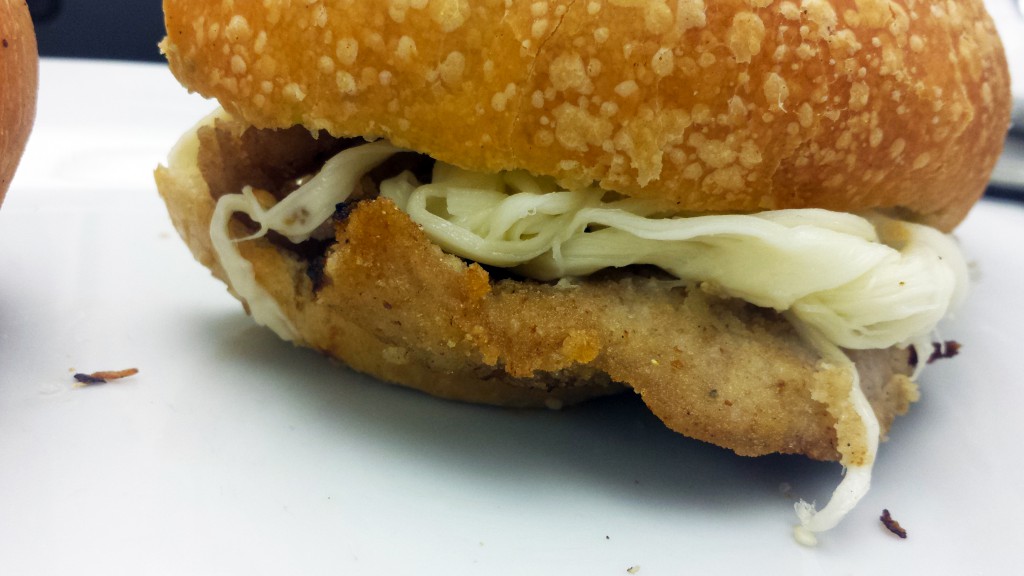
breaded pork, way better than a breaded steak sandwich I had recently
Pata, consisting of chewy, gelatinous, mildly flavored chunks of connective tissue from a cow’s foot,
or simple cheese and veggies. Many vendors will have their own particular versions though. If a particular stand is known for their tacos al pastor, for example, they’ll usually offer a cemita al pastor as well
or carne asada, if that’s their specialty
At Cemitas Puebla, you can get all of the above, in addition to Tony’s favorite, carne enchilada, a marinated, roasted pork loin
and several others, including their well-known Cemita Atomica, which combines the Milanesa, Jamon, and Carne Enchilada in one gigantic sandwich.
The Milanesa is my personal favorite, but I haven’t had a bad sandwich there yet.
You Can’t Please Everyone
Poblanos have come from as far as two states away to try Cemitas Puebla’s take on Pueblan cuisine. Most of them are thrilled. To some, nothing will ever match their memories of home. I asked Tony what differences there might be between the cemitas he serves and the ones in Puebla. Size, for one. “Jim, I’m not kidding you, if I made them as big as they are down there, I’d have to charge $22 each for them,” he laughed.
The fact that papalo is only available seasonally here is another. Like it or not, the polarizing cilantro-like herb is one of the signature flavors of Puebla. Tony says he has been working with local greenhouses to try and get a year-round supply but that hasn’t materialized yet. Currently, he can only get papalo from around the 2nd week of June to the 2nd week of October.
One recurring theme in some internet comments of late regards a change in the bread. Great sandwiches start with great bread, so that’s been a big concern for fans of the restaurant. I asked Tony about the change.
Tony told me that he’d always wanted to bring the breadmaking in-house, and with the new Fulton Market location came a bigger kitchen and also a basement with space for a bakery. The bakeries he contracted with had added bread stabilizers and preservatives to his family recipe, something that’s common for a commercial bakery, but that Tony was never fully happy with. “These small ethnic bakeries, God bless them, they sometimes have to keep a product on the shelf for a second day… We’re never going to serve a roll on the second day. We use the day-olds to make the Milanesa breading,” he told me. “We don’t even have a freezer. Everything is always fresh.”
There have been some bumps in the road though. Tony started out by baking the rolls himself, but quickly found himself overwhelmed. One busy Friday, when a part of a batch didn’t rise properly, he ran out early in the day and had to turn people away until he was able to get another batch done in the late afternoon. “Believe me, the last thing I want to do is tell someone I can’t serve them a sandwich because we’re out,” he said.
Since then, he’s hired a dedicated baker, and with someone able to give the bread their full attention, the rolls are definitely improving. It’s still a work in progress though. You may have noticed some differences in the bread in my photos above. Here’s a cemita I had back when they first opened their Fulton Market location, before they started making their own bread:
Now compare that to this photo of the cemita de pata:
If I were to compare the current bread to my memory of the old bread, there might not always be as many sesame seeds; it might be a bit less crusty; the crumb might be a touch moister, lighter, less chewy; some of the rolls tend more toward a spherical shape than the more spread-out shape typical of the old bread which can make them seem smaller. That sounds like a lot, but most of the differences are pretty minor, and some of them are actually for the better. It’s very good bread, and the consistency is improving. Additionally, Tony has been working with the baker to try and make pan arabe, the Lebanese-style pitas, in the size needed for his tacos arabe. He says, “Everything I’ve done, I’ve done to try to make the product better.” I believe him.
Eat All the Foods
So much so, in fact, that rather than pestering him for the bread recipe and the sauce recipe and DIYing this sandwich in my usual manner, I’ve eaten damn near every item on his menu over the past several weeks. Tony did buy my lunch the day we talked, but not the other half-dozen or more times I’ve eaten there this month. In addition to the cemitas and the tacos arabes, you can get tacos made of pretty much all the fillings available in cemitas, along with a few extras, like chorizo.
They also make a taco government precioso with chorizo and steak, and a taco cecina featuring thin sheets of cured steak.
Another customer favorite is the chicharron quesadilla, crunchy pork rinds and melted cheese griddled inside a tortilla.
Though the chipotle in adobo sauce is the star of the show, they also have respectable red and green table salsas available. The green is light and tart, while the red has a very nice savory tomato character and a touch of heat.
Nobody’s going to Cemitas Puebla and not eating a Cemita though. Or at least I’m not. Not when I can get a beauty like this.
Like I wrote back when the new Cemitas Puebla location first opened, having cemitas available so close to my office was going to require a lot of self-control. Luckily for me, this month I got to tell my self-control to take a hike.

I like sandwiches.
I like a lot of other things too but sandwiches are pretty great


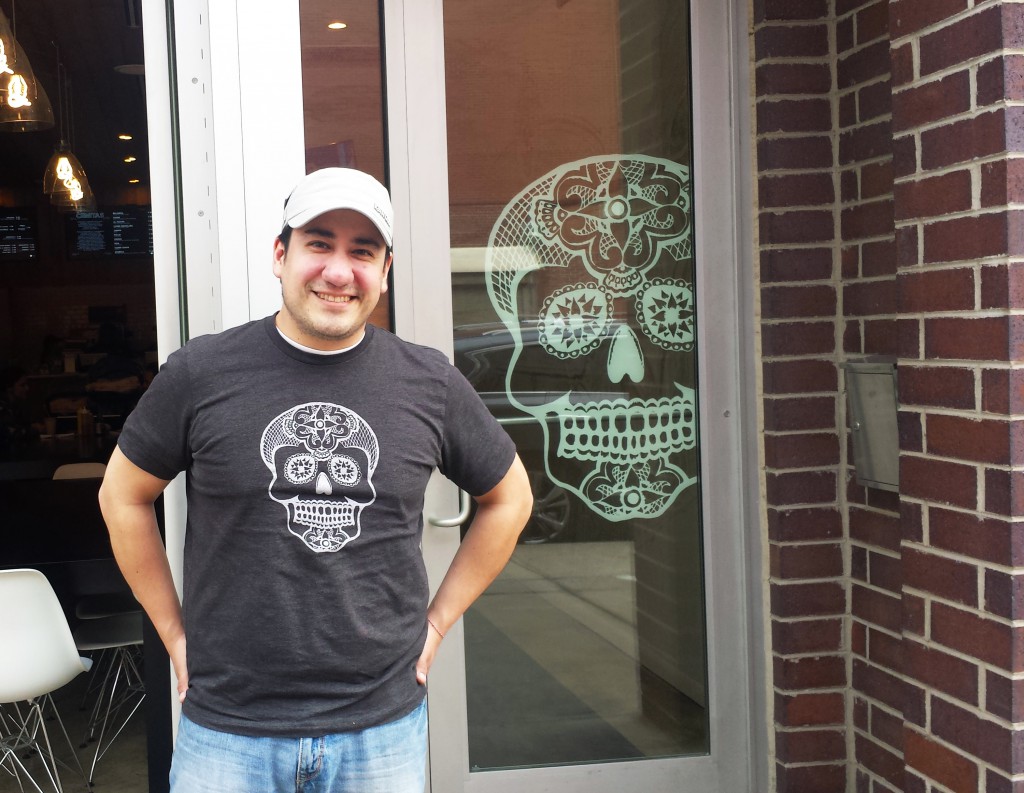

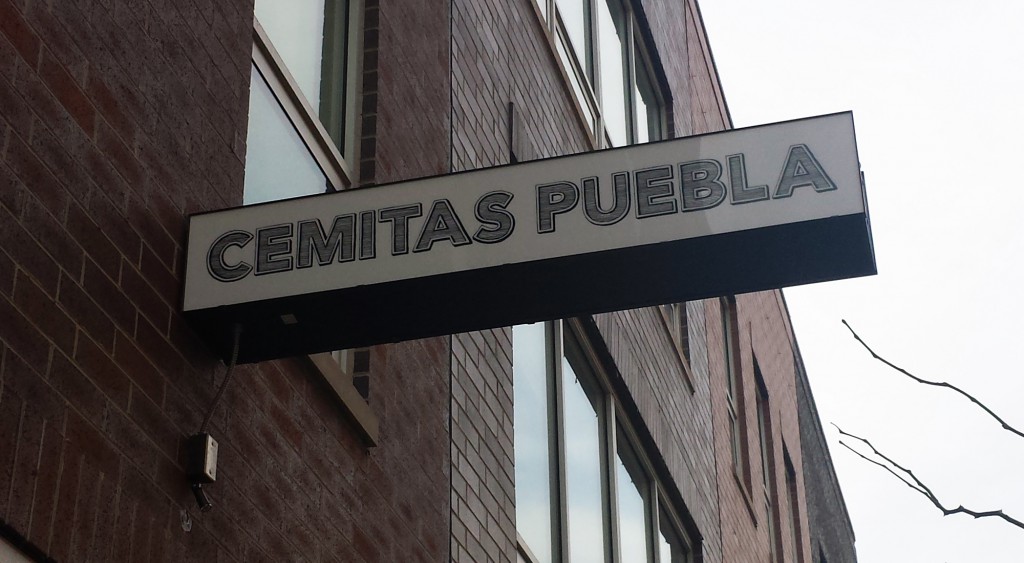
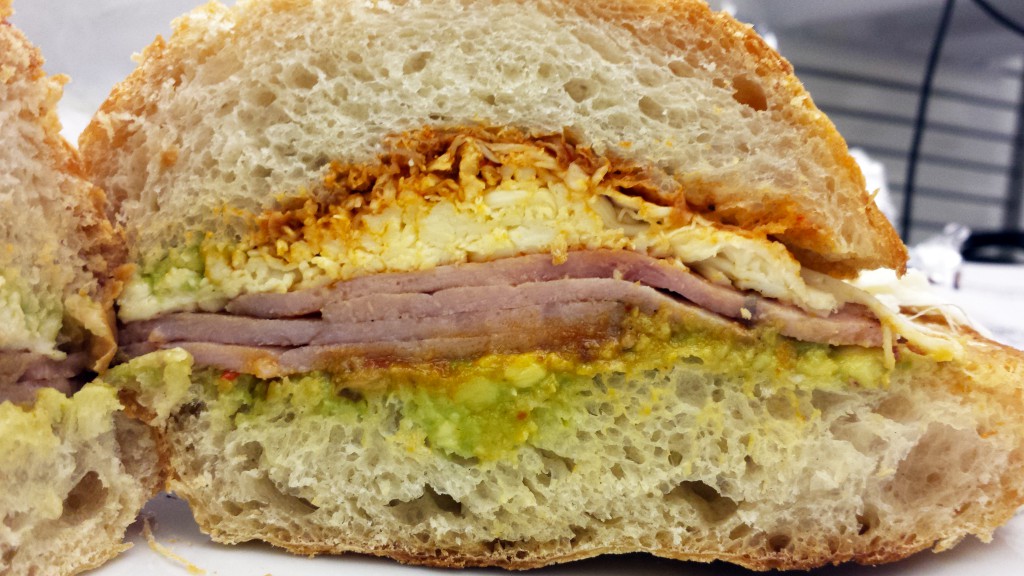
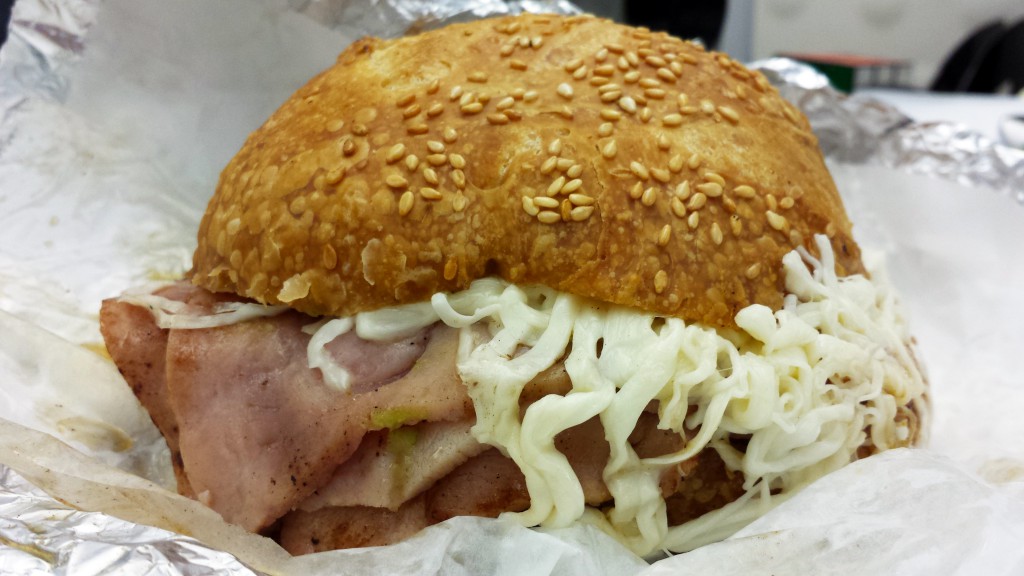
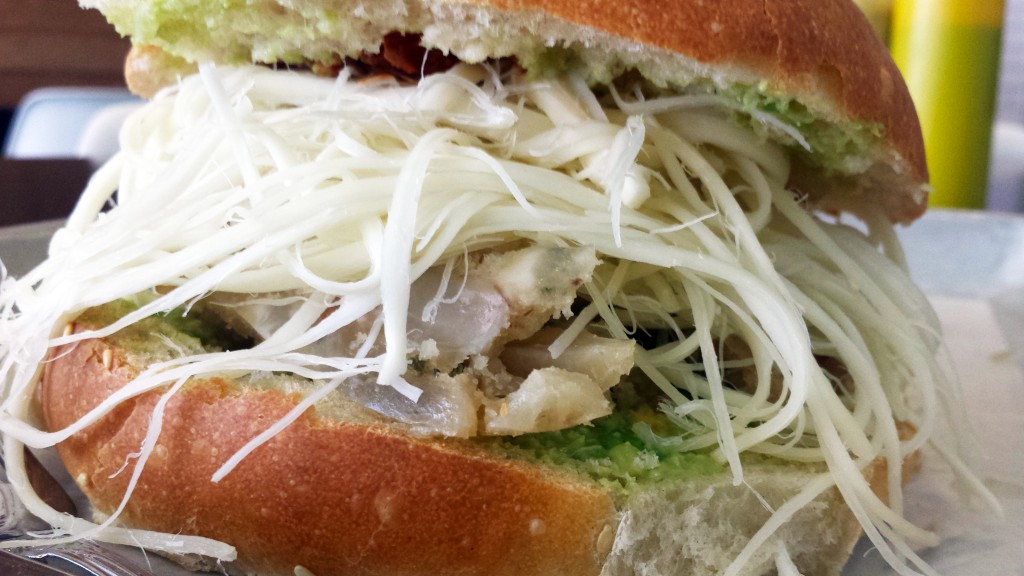
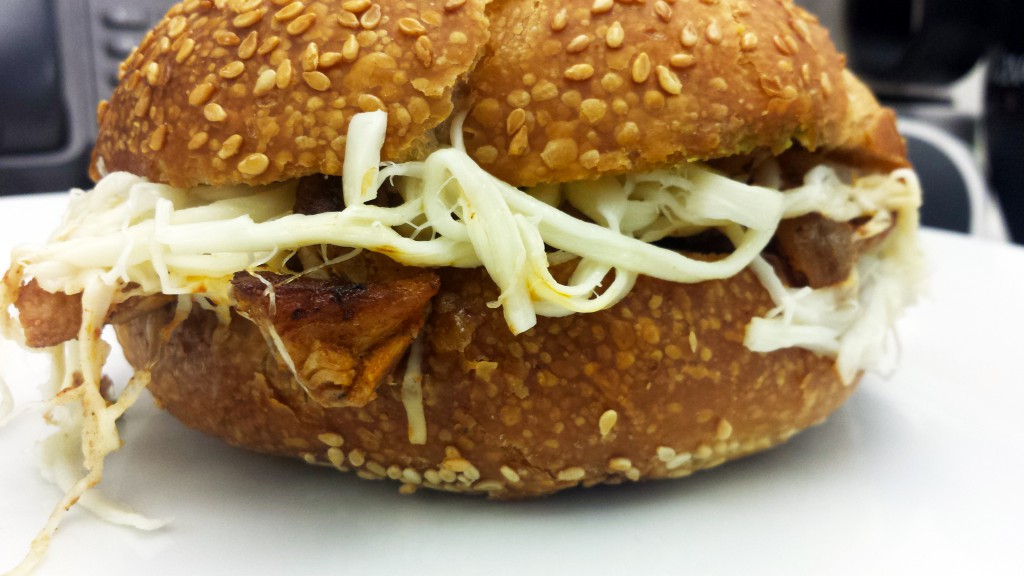
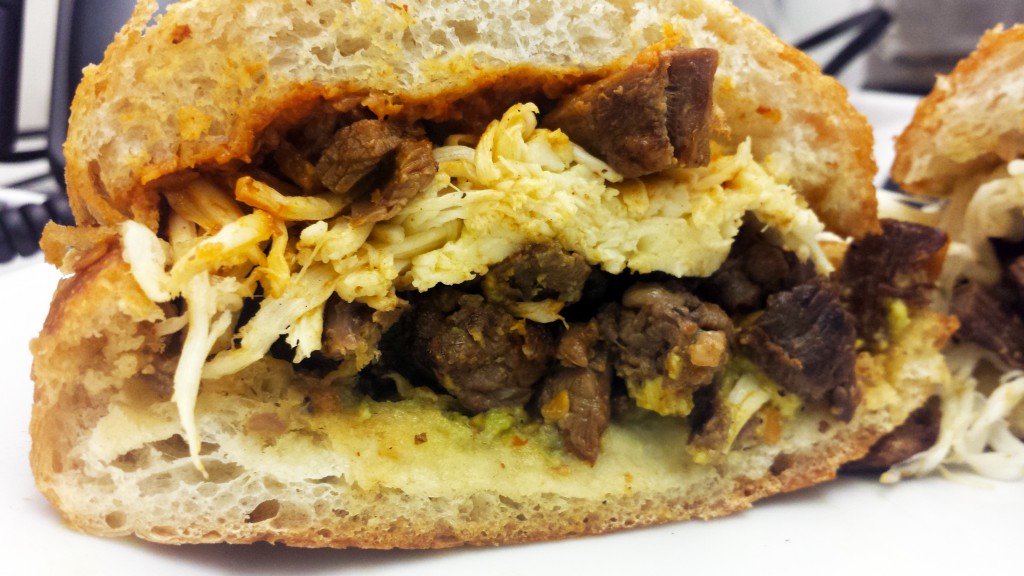
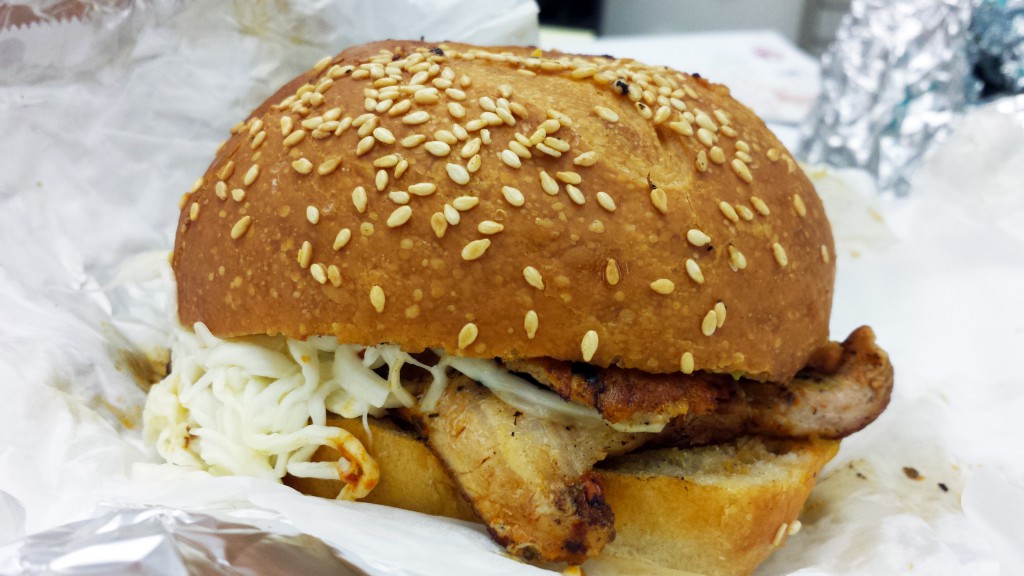
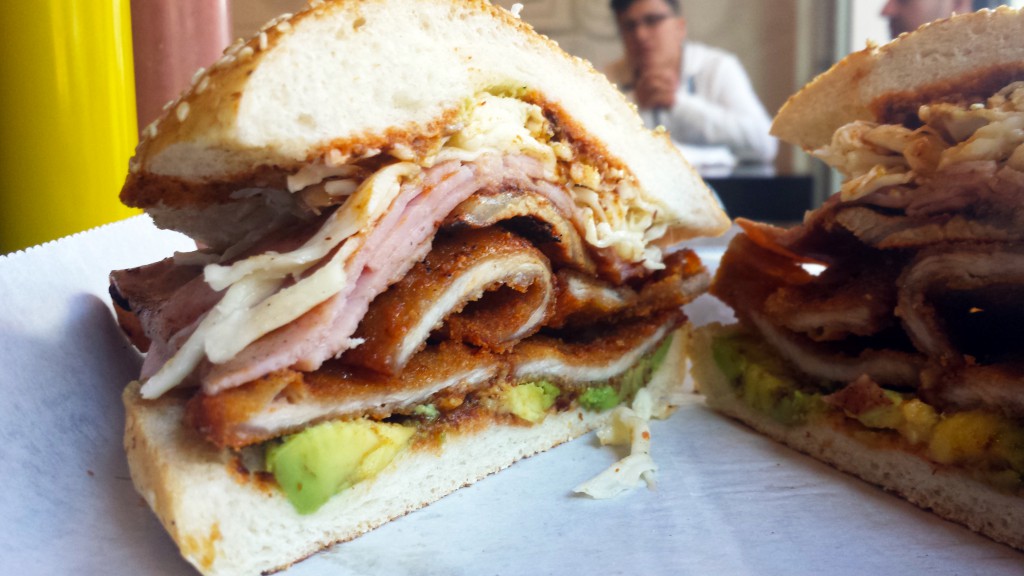
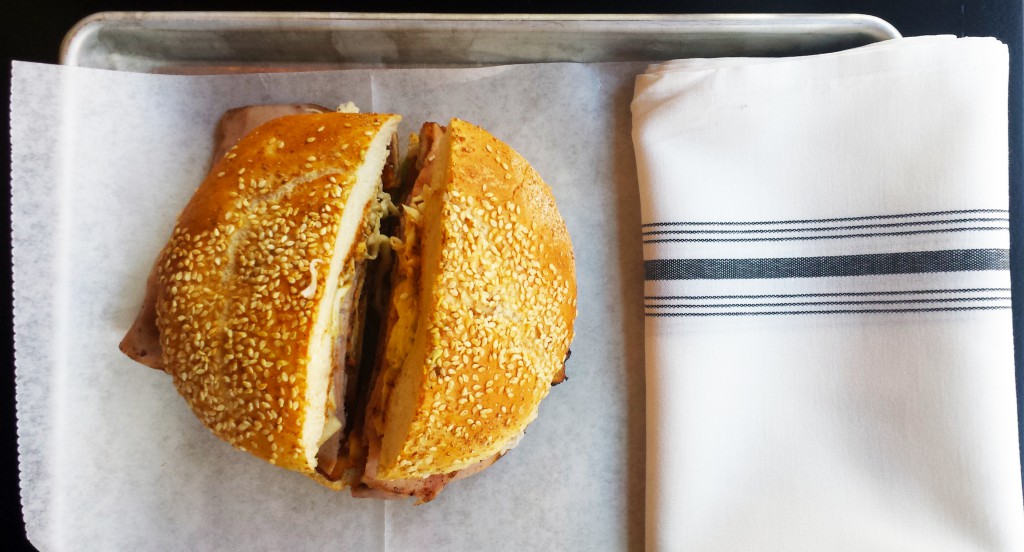
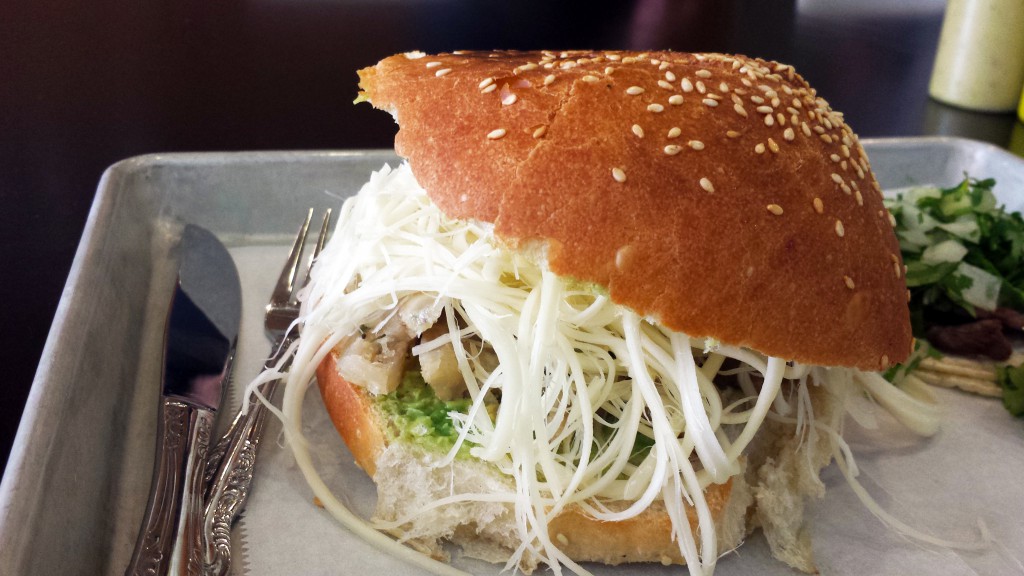
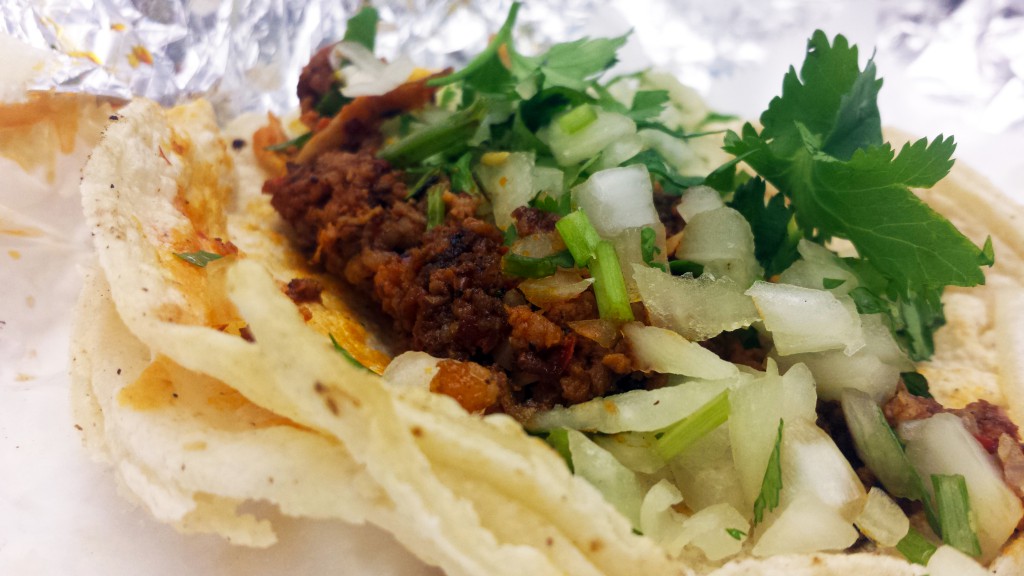
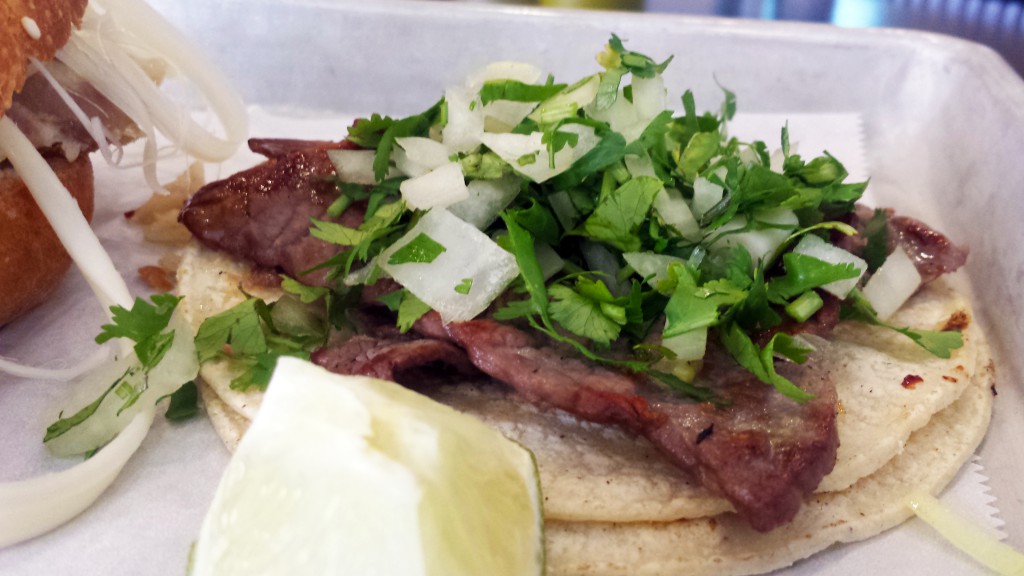
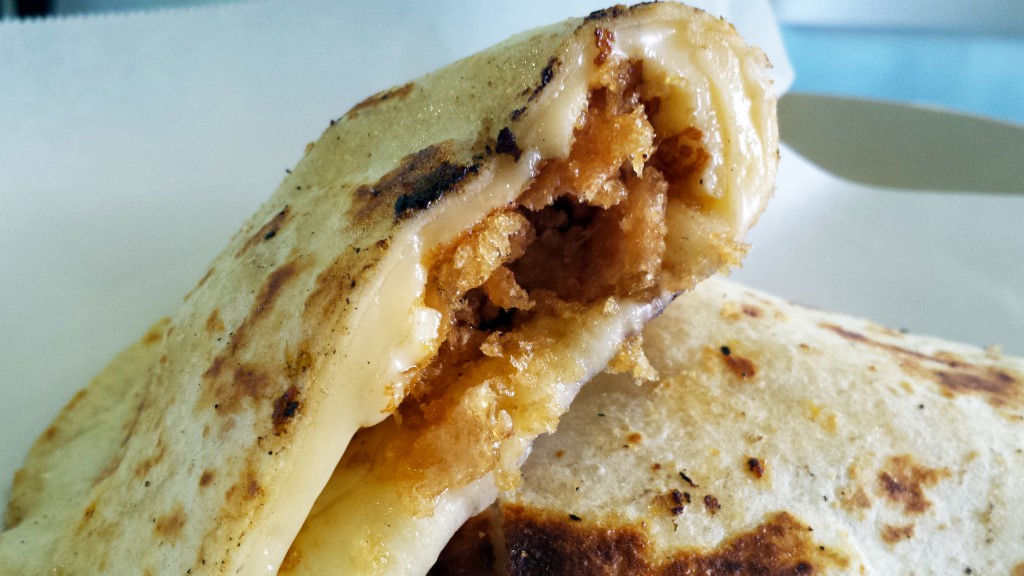
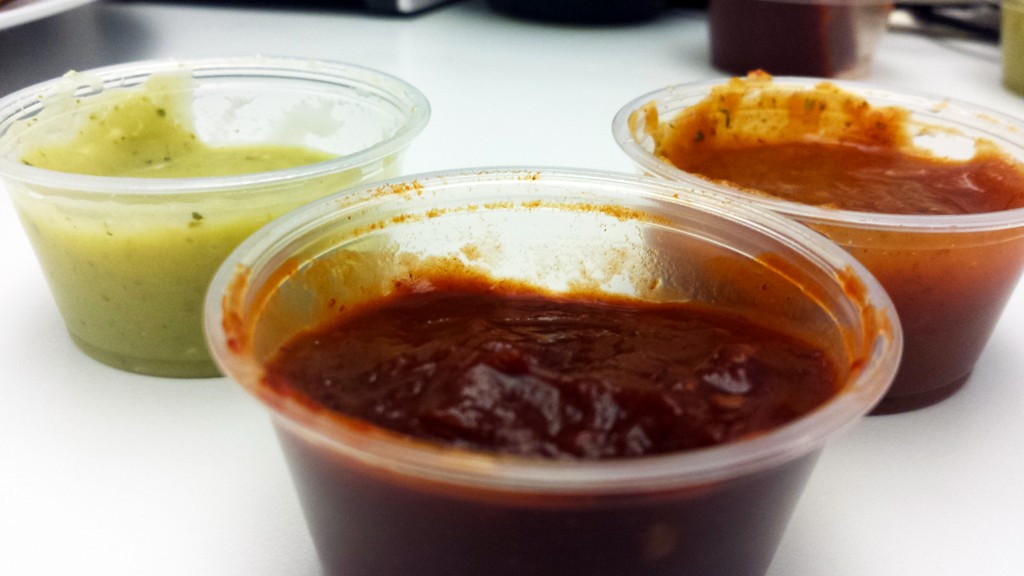
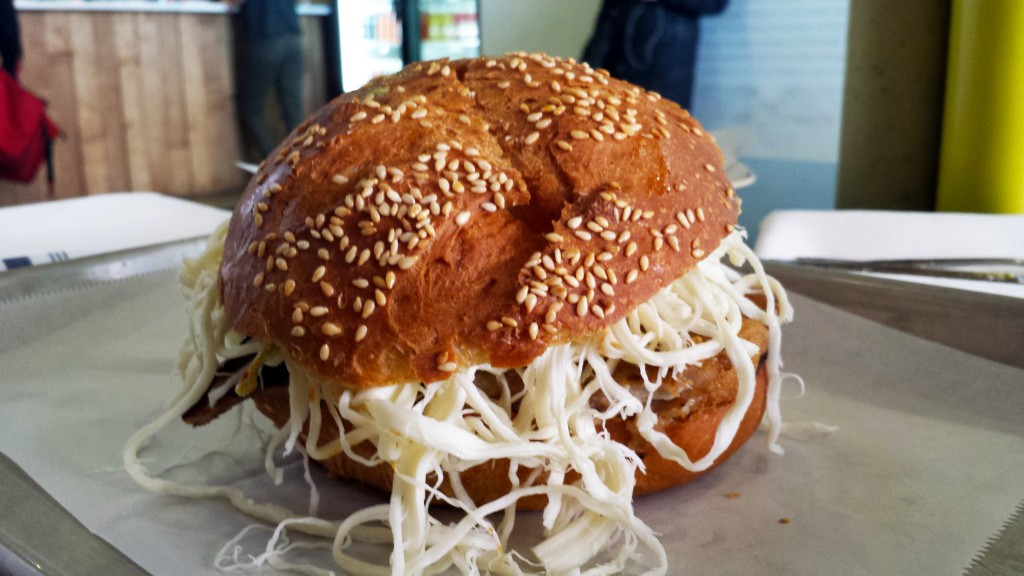
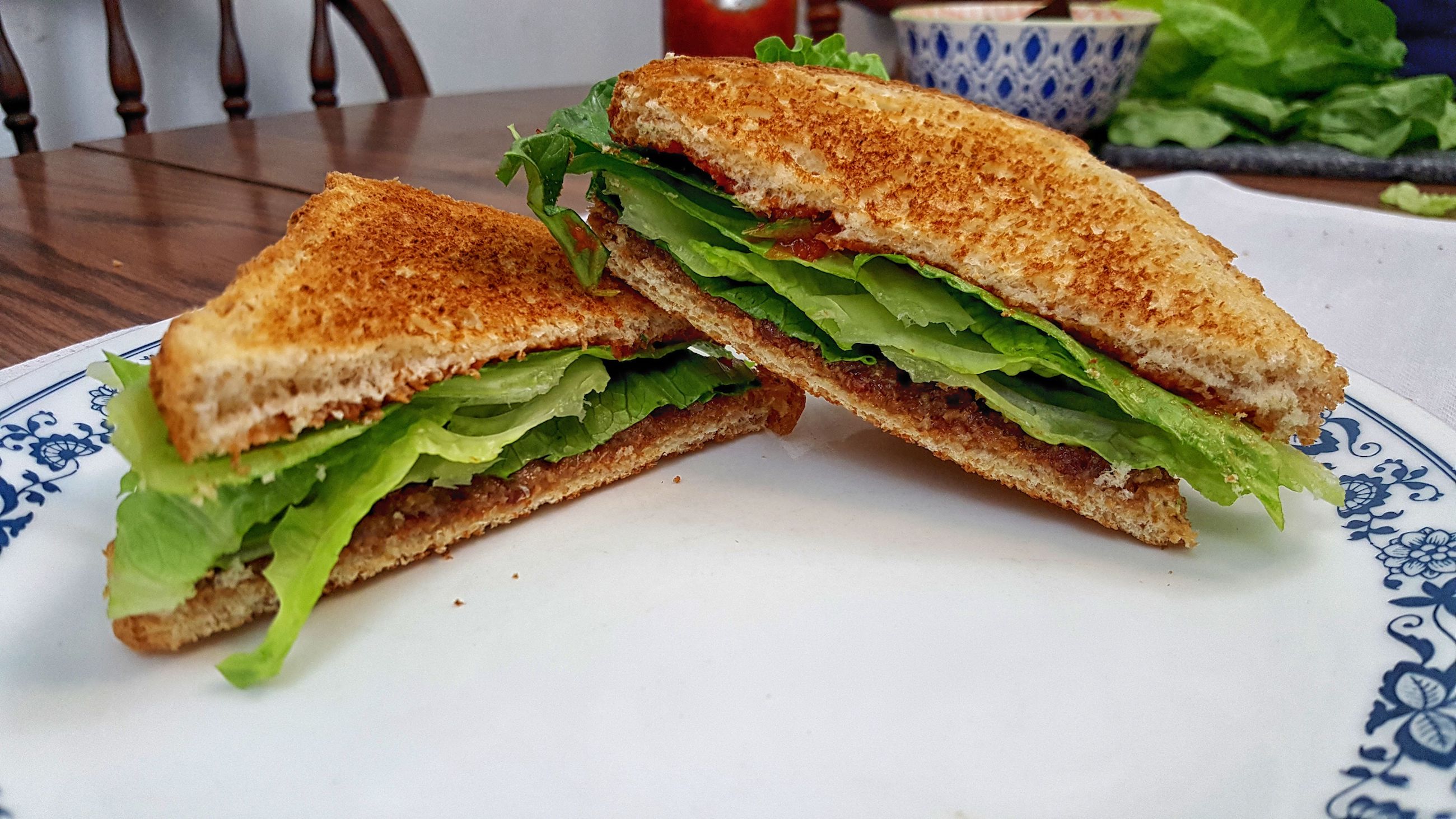








Recent Comments